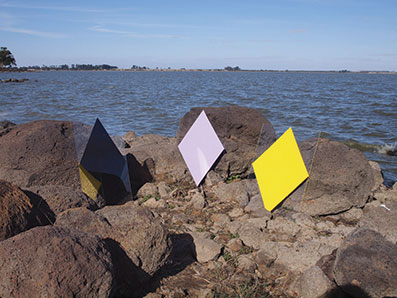Landscape Paintings, Lake Bolac - Zagreb, 2014

Lake Bolac 2014

Lake Bolac 2014

Lake Bolac 2014

Lake Bolac 2014

Lake Bolac 2014

Lake Bolac 2014

Lake Bolac 2014

Lake Bolac 2014

Zagreb, Ilica (Ilica St), 2014

Zagreb, Ilica (Ilica St), 2014

Zagreb, Primorska (Primorska St), 2014

Zagreb, Park Maksimir (Maksimir Park), 2014

Zagreb, Ilica (Ilica St), 2014

Zagreb, Šuma između Zelengaja i Tuškanca (Forest between Zelengaj and Tuškanac), 2014

Zagreb, Šuma između Zelengaja i Tuškanca (Forest between Zelengaj and Tuškanac), 2014

Zagreb, Tuškanac (Tuškanac), 2014

Zagreb, Tuškanac (Tuškanac), 2014
Landscape Paintings, Lake Bolac - Zagreb, 2014
In the middle of the Victorian Volcanic Plains (South Eastern Australia) there is a vast body of water called Lake Bolac. Lake Bolac was formed around 20,000 years ago through volcanic eruptions. Lava flows dammed the river creating an enormous shallow teardrop shaped depression that filled with water, the shoreline of Lake Bolac is 27 kilometres long.
Eels have migrated along a strange but steady path to reach the waters of Lake Bolac. The life cycle of the numerous eels that inhabit the rivers, streams, lakes, swamps and estuaries of the plains is an epic story.When they reach breeding age, which can be anywhere between five and thirty years, mature eels swim out of the rivers around Australia, including western Victoria and head along the Australian continental shelf to the seas around northern Queensland and Papua New Guinea, several thousand kilometers away, where they breed and die. The young eels, called elvers, are transparent and leaf shaped. They take a couple of years to return to the rivers of the south east coast of Australia, Tasmania and New Zealand. Then, usually in early Autumn, they swim up the rivers and even slide across damp ground to find a home in the still fresh waters of lakes and wetlands, including those on the plains.
From the ocean the eels must cross 100 kilometres of land to reach Lake Bolac. Aboriginal people built a vast aquaculture system from the volcanic stones along the shores of the lake, trapping and harvesting the eels. For at least eight thousand years (most probably a lot longer) in Autumn people gathered for a festival of eels. Mainly to eat them. The organisers of the festival built an enormous stone arrangement in the shape of an eel, the size of a football field, by shifting massive boulders into position. Eels are thought to have been traded widely among Aboriginal groups, forming the basis of a sedentary society.
When Europeans invaded Australia the eel festivities and systems of aquaculture ceased for around 150 years. A highway was built through the middle of the giant stone eel. Eels are still caught and traded now, and exported as far afield as Germany and Korea. The largest eel processing plant in the southern Hemisphere is situated at a small rural town called Skipton, on the Glenelg Highway.The eel festival resumed in 2004 and is organised by a committee of local people of both Aboriginal and European descent.
Four non-objective monochrome paintings on perspex painted yellow, black, pink and lilac were made on the shores of Lake Bolac, ‘en plein-air’ style, in March, 2014, during the eel festival. The choice of colours was inspired by the lake, the volcanic stones, the light and the place. The shape, scale and materials of these paintings were developed in 1999 as a format that is neither overwhelmed by nor is intended to overwhelm trees. These non-objective monochrome paintings are ‘landscape paintings’, designed to collaborate with the landscape.
To Zagreb
These four particular ‘landscape paintings’ were taken to Zagreb and installed in an exhibition at G-MK gallery (June 2- 28, 2014). During a two-week residency I followed trails and paths alone and with friends through Zagreb finding places that hold some affinity with these paintings. Places where the paintings feel somehow ‘at home’, or relevant places with which the paintings can make some small collaboration. Vacant shops on the Ilica, the big old oak trees in the little forests of the Tuškanac, rambling gardens of empty homes and mansions on the hills of Zagreb, accompanying weeds and little potted plants and other small incidents of ‘wilderness’; all beautiful places in-between order and disorder, in-between people and ‘nature’, places where ‘flux’ can be seen. Places that somehow relate to or have empathy with these paintings (materials, size, shape and colour), some of these places also seem vulnerable to processes of ‘tidying up’ or ‘progress’. These places all have stories too. They have histories. The paintings have been placed in these landscapes and photographed, made into postcards ready to be sent elsewhere. Small ripples from Lake Bolac.
Kerrie Poliness, May 2014
http://www.g-mk.hr
Slike pejzaža (jezero Bolac i Zagreb)
"Usred viktorijanske vulkanske ravnice u jugoistočnoj Australiji nalazi se veliko jezero Bolac. Jezero Bolac se formiralo prije približno 20,000 godina kao posljedica vulkanskih erupcija te je mjesto od velike važnosti.
Četiri ne-objektne, monokromatske slike napravljene su na obalama jezera Bolac, koristeći ‘en plein-air’ pristup. Te slike su “slike pejzaža”, stvorene sa svrhom suradnje s krajolikom. U Zagrebu, sljedila sam puteve i staze, sama i s prijateljima, ne bi li naišla na mjesta koja sadrže sličnost s tim slikama. Slike su bile postavljene i fotografirane unutar tih krajolika te pretvorene u razglednice, spremne za slanje negdje drugdje. Malo mreškanje s jezera Bolac".
















